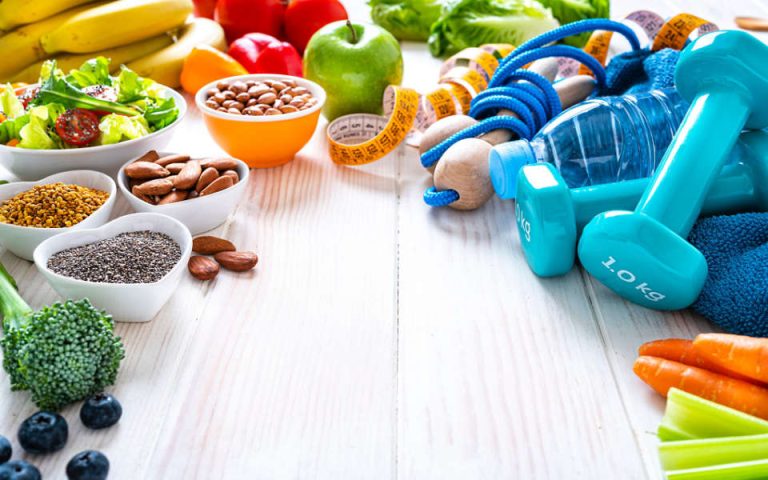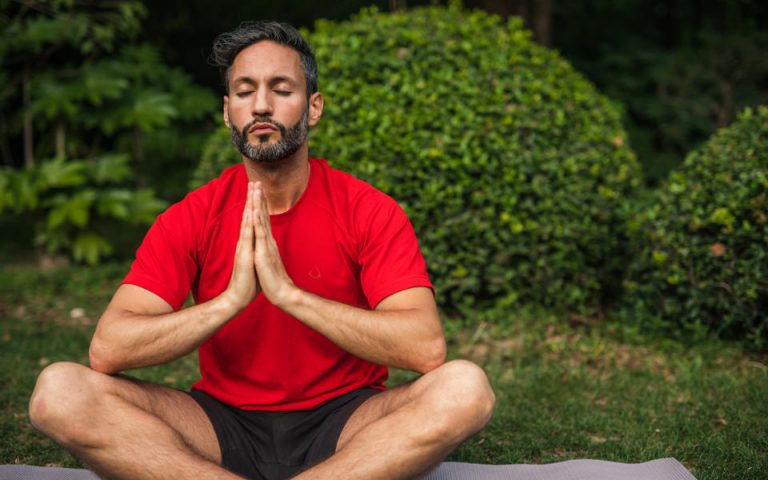For fitness enthusiasts and wellness advocates, HIIT is already a household name. It has earned its reputation in the wellness industry as an integral part of training, even conditioning for professional athletes.
It’s only right to dig into its layers, the components of how HIIT is effectively conducted, how long does a HIIT workout lasts for it to mirror great results, and everything in between. Of course, the benefits of this well-known workout deserve a spot as well!
Definitely, it cannot be a household name for no reason, right?
Over the years, countless fitness experts have confirmed how HIIT can actually change the game for someone’s overall health. Surprisingly, HIIT can actually deliver! It can be very flexible that even the person who has a sedentary lifestyle can actually consider doing HIIT as a beginner.
And yes, you’re right! Everyone can hop in and start doing it!
What is HIIT?
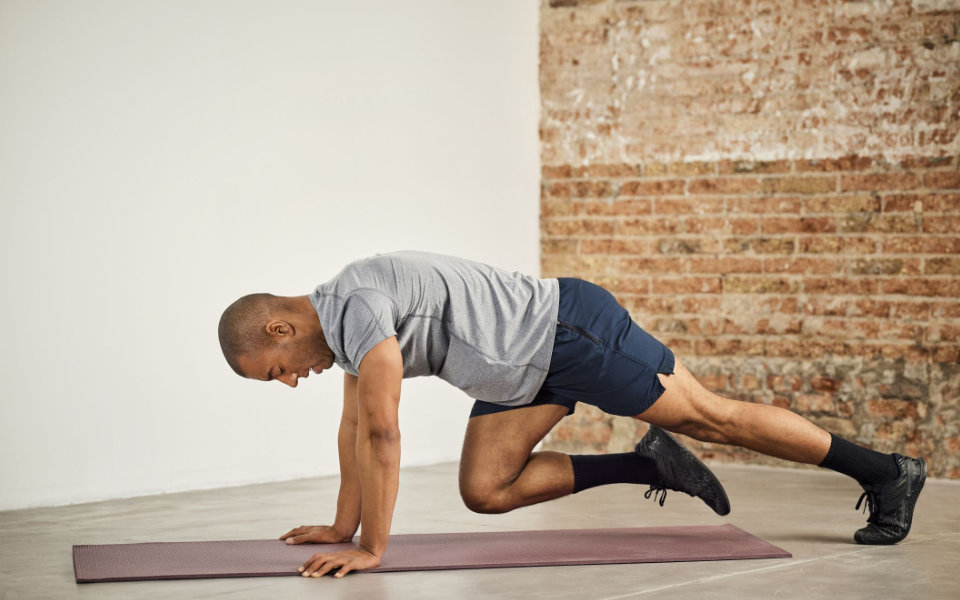
In a nutshell, HIIT values rest just as much as it values movement.
Sounds strange, right?
HIIT or High Intensity Interval Training is a series of movements or routine that lasts for 10 to 25 minutes (depending on the complexity of the movement required), with the interval of 30 seconds to 2 minutes. The goal of HIIT is to reach about 80-90% of a person’s maximum heart rate throughout the whole exercise.
Well, that is the rule of thumb to achieve the goal of maintaining the desired heart rate and eventually come up with your tailored fit goals. Of course, you can always go above and beyond. HIIT workout can be a component of a more specific fitness program or conditioning for athletes. Yes, it is that diverse. It can adjust itself from beginners to professional athletes!
Fundamentally, this is how it should be when we speak of High Intensity Interval Training. But as time goes by, several techniques or approaches have been arising which may vary depending on an individual’s goal, level of comfort and even complexity of movements. For professional athletes, movements or routine are actually much more diverse, all dependent on their respective sport.
Does it sound too complex? Here’s the thing. We are only getting started. The basics of HIIT can look and sound different with each person, and that’s totally fine.
Hold up!
For some people, especially the ones whose quite new to getting fit and healthy, may find HIIT workouts very intimidating. This is valid and totally understandable. Mainly because the people we see on videos, information tools, and such have made it very complex and hard to manage.
But, to iron things out: HIIT can be very flexible, dynamic, and even progressive. It has a friendly combination of movements, variation of repetitions and even time intervals depending on the person’s fitness level.
So, to burst your thought bubble, HIIT is not as hard as it sounds. At the end, it’s really worth when you keep an open mind in exploring possibilities on how you can be healthy and fit, considering the benefits of HIIT workouts.
How Does High Intensity Interval Training Work?
Since HIIT is a form of aerobic exercise, it has a systematic way of following the right timing. It creates a periodic interval of movement followed by rest with each round or repetition. This concept helps train certain parts of the body (from within) to have increased capacity to carry and deliver oxygen more efficiently. Most HIIT workouts would require a rest of at least 60 seconds and a maximum of 120 seconds after finishing one round or repetition. This is when the body would have enough room to catch up on breathing and get a rough estimate of the heart rate which determines calorie burning ability and of course, to develop faster metabolism after workout.
Now that HIIT is becoming more and more interesting…
What’s next?
You might be in and out of the idea if HIIT is something you can do, with your physical shape and capacity sitting still at the back of your mind. Since this specific workout has been here for a while already, there would be misconceptions and beliefs that might be attached to it that are not necessarily facts after all.
For now, let’s dive into the benefits or what we like to call, the good side of HIIT, a.k.a, the icing on the cake!
For the time being, let’s indulge on the wider perspective and see how far can HIIT go in terms of its benefits. Traditionally, HIIT has been introduced to most people with a sole purpose, which is weight loss. But, there is actually more to that!
What Are The Benefits Of HIIT?
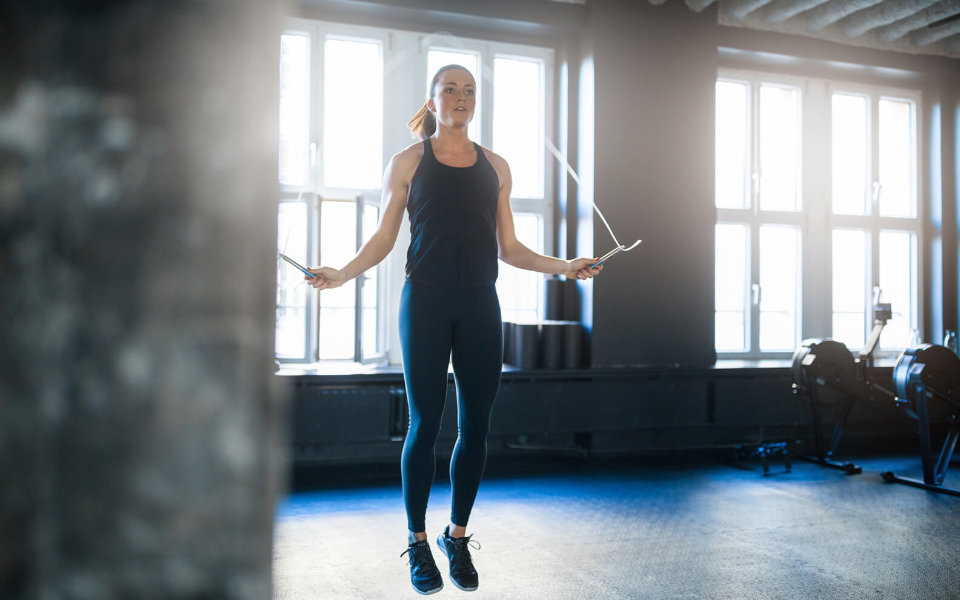
1. Save Time
If you still ask yourself if HIIT work out is really for you? This might be the answer you’re looking for! It’s time. Literally and figuratively, a HIIT workout won’t take so much of your day. In most cases, 30 minutes is enough to complete one session. It needs a minimal amount of time to execute. For beginners and those with a medical condition, 20- 30 minutes (even as quick as 15 minutes is not bad at all for a beginner!) would be enough to finish HIIT. Unlike other cardiovascular training or workout, excellent results in HIIT done 3 times a week is very realistic and easy to follow.
It’s becoming more and more mind blowing for some people why HIIT is very famous. Well, for one, it opens a window for an individual to stay fit and active within a short span of time. It can only get better from there. Most fitness clubs or gyms would develop group classes of HIIT which makes the training itself more engaging and easy-going.
The whole concept of putting HIIT in a group or class set-up is that it brings more happy hormones like endorphins, oxytocin, dopamine and even adrenaline. These hormones get a very good kick start if an activity is conducted with like-minded individuals, creating a healthy and conducive environment in health and wellness.
The hormones mentioned above not only produce better mood and drop anxiety levels that mainly happen in the brain. They are also in charge of regulating metabolism. These hormones have adaptive capacity to drop cortisol or the body’s stress hormone which can whack the body’s normal rhythm. What an eye-opener to start an HIIT workout, right?
2. Space saver
Since HIIT has been in the fitness industry for quite a while, it’s known to be economical not only with time, but also with space. It creates a mindset where getting fit doesn’t have to be as glamorous as what we thought of. Most HIIT workout would require limited space where movement is wide enough to finish in half an hour or even shorter. Most people who are deeply invested with HIIT started with just securing a good quality yoga mat and trustworthy training shoes to avoid uncalled-for injuries. By now, HIIT is clearly not difficult, agree?
But of course, as time goes by and HIIT is really something you enjoy, adding more weights to your normal routine, or buying more sophisticated equipment in enhancing your strength, endurance and physical well-being is never a bad thing. It can only move upward from there.
3. Heart health
Cardio work out, which is the primary focal point of HIIT can significantly improve a person’s heart health. One of the top reasons why this kind of training makes your heart “healthy” is that it actively promotes efficient blood circulation throughout the whole body.
The harmonious release of the hormone endorphin, when a person does regular cardio workout like HIIT, delivers the right amount of oxygen through the bloodstreams, which makes all the other processes in the bodywork perfectly.
What will come next is even more surprising!
Low intensity HIIT is known to improve heart structure. When HIIT training has been established for a certain period of time, it can massively improve the chambers of the heart. From this, it can effectively pump an increased amount of blood from the heart. This alone can delay or even completely shy away from the threat of diseases involving the heart specifically stroke and arrhythmia.
Aside from the fact that it can massively improve heart health, it actually has the same effect on respiratory health. Researchers have identified that HIIT can generally improve the function of the lungs by creating desirable intervals in between each round. This promotes optimal breathing room for the lungs to function in a normal rhythm. Case in point, HIIT workout can improve muscle strength of the lungs over a period of time, and of course with supervision of a suitable healthcare provider.
4. Weight Loss
Weight loss by HIIT workout is actually an understatement. There are several studies over the years that have revealed that the short span of time needed to do HIIT training regularly is effective enough to induce FAT loss and retain muscle mass through the process. With the intensity and steady state cardio that HIIT literally delivers through the entire body, it captures the adequate rate of strength and fat burning capacity that the body needs to produce good results physiologically.
Another up-side of HIIT workout is that it is very dynamic. It can actually be inserted with other strength training exercises if a person would want to get better results on a more specific part like legs, upper body or even just the arms. This practice is known to be getting very good results among athletes or sports enthusiasts. HIIT workout has become one of the fundamental parts of a comprehensive fitness routine for all, if not most people.
Wait, what if weight loss is not your concern?
Oh well, HIIT training is still great, if not, best for you. It’s because HIIT work out, with its goal of achieving optimal heart rate, can literally maintain a very fast metabolism for a perfectly healthy individual. So, if you would want to just keep everything the same, physically and internally, HIIT workout is still something you can always consider! In any case, there’s more to it than just pinning your eyes on weight alone.
5. Disease prevention
Just like any other physical activity, HIIT can almost immediately normalise the mechanical processes inside the body. If it’s done consistently and the body getting the right fuel towards recovery phase, nothing can go wrong if you decide to navigate your way towards a HIIT workout.
Some studies are actually laying down the facts that HIIT workout can lower down blood glucose levels of people with sugar issues, and even blood pressure of individuals with a history of impaired BP levels. Even if disease or threat of disease is not really surfacing on a person’s life, prevention is still better than cure.
6. Mental health
Since HIIT is under the category of exercise as we all know, it can regulate the neurotransmitters in the brain that navigates emotions, mood and even anxiety. With the boost of hormones mainly the endorphins, oxytocin, it can really be a game changer even if weight and strength are really not the main issues of an individual who’s gaining interest in engaging in HIIT workout.
Another positive outcome of HIIT is that you can literally pull yourself out of the black hole. Because of the movement that this exercise would require, shifting in space through physical movement can do wonders for an individual’s mental well-being. That in itself is already a game changer.
Since we’re keeping it real and raw from the very beginning, let’s try to hop in on the other side and see what you should be looking into, or some areas that you should re-visit before exploring the world of HIIT as a workout.
Is HIIT Workout Really For Me?
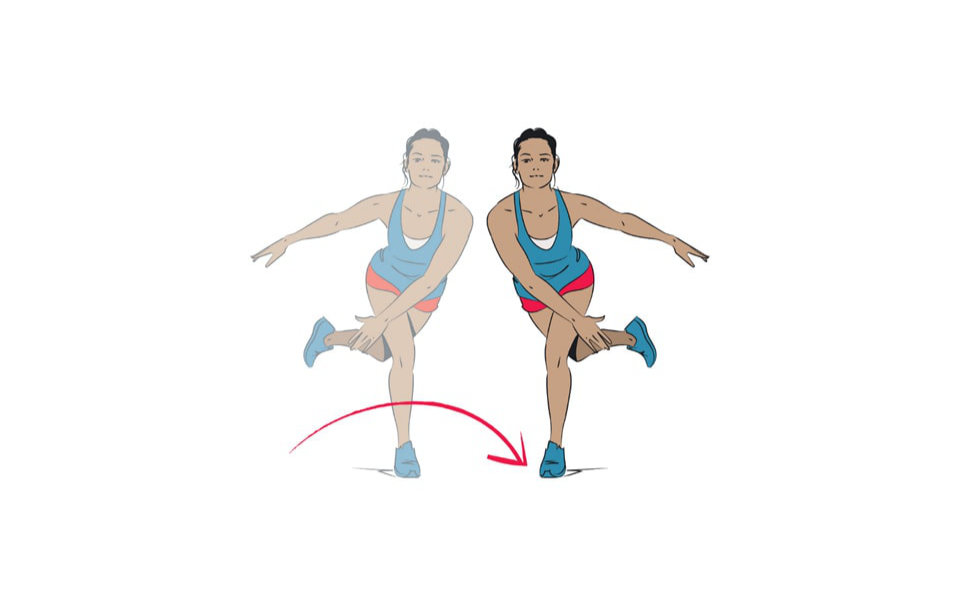
Now, what are the questions you should be asking yourself if HIIT workout is really for you?
There would always be other activities you can choose from aside from HIIT workout. These points can either encourage you to pursue HIIT, or it can even convince you to just sit and be sedentary until the end of time. However, it’s equally important to acknowledge that regular physical activity will pump in so many great benefits to your body in every way possible. Again, always set up an open mind with these ideas, anything to keep you fit and healthy is always welcome!
Here are some things that might come to your mind:
1. Do I have health issues that I should worry about?
This is something really worth considering. If your health provider has laid down the cards on where you’re at in terms of health status and your capacity to perform HIIT workouts, please be open and listen. Like any other exercise, your body has to be physically ready and capable at all times. If you have recently suffered from an injury, clinically diagnosed with serious illness or disease, then HIIT may not be a great plan at the moment. Sure, you can aim for a body that’s well enough to do HIIT after a while, or even after recovery. But first, prioritise healing and getting well.
To a certain extent, not all people who want to shed a hefty amount of weight are recommended to grab a trainer and start a HIIT workout. Studies have indicated that people who are morbidly obese should do a lighter exercise like light jogging or brisk walking for a short period before jumping into the world of HIIT workouts. Why? To physically prepare the body and avoid limited movements that can seriously cause injury while doing HIIT exercises.
Nonetheless, it’s never a bad idea to seek help or advice from your healthcare provider if you are physically well enough to do a HIIT workout at any given time. Setting up a realistic time frame where you would have enough window or space to heal and recover (if you have existing injury or pain) is definitely acceptable in the long run.
2. Do I have enough fuel to do HIIT work out?
Just like any automobile, simply put it this way: don’t expect your body to perform great without putting in fuel to do so. This goes exactly the same on how you will perform during HIIT workout, you need to have the right fuel.
As blunt as it is, but, having the right fuel or energy in the body doesn’t only happen before work out. It has to be consistent and done repetitively so can be at your best during HIIT workouts.
This is where your macronutrients come into play. You have to be very keen on putting in nothing but good quality macronutrients including carbohydrates, protein and fat on a regular basis. Whether you’re on the recovery phase or pre-workout phase, your body only deserves high-quality meals.
How does a high-quality meal look like?
Pre and post-workout meals should always be planned and not short-changed. These two important mealtimes are vital in the long run. Here is a sample pre and post HIIT workout meal for you:
- Pre-workout – rolled oats, unsweetened almond milk, fresh berries
- Post-workout – protein powder (of course, with excellent set of ingredients), a good slab of protein, green and leafy vegetables, potatoes
In summary, take nothing but whole foods. Your body will thank you later for putting up with a solid foundation of food. You will see significant results after a while of clean eating. Some may overlook this reality, but pre-workout is equally vital as post-workout. These two meal times don’t only cover the performance and strength that a person builds during HIIT, it also places a solid foundation on how fast and easy recovery can be even a few days after doing the training.
Do I get enough rest and recovery in between HIIT workouts?
Believe it or not, sleep can make or break your end goals in overall health, most especially in between workouts and on the days that you’re supposed to recover.
The reason is simple, stress. Your body gives in to so much physical and mental stress from intense physical activity. It is definitely inevitable that stress can also come from other environmental factors like work, weather, issues with transportation, and others (by others it can mean all the other little things that pile up along the way!). With these instances, your body would need enough time to rest and recover. Get high-quality sleep at night, make sure your sleeping zone is conducive enough to repair your body from the inside so you’re well enough to recover from HIIT workout.
Taking supplements to initiate sleep is never a bad call. It’s something worth considering after a long day of training and workout. Sleep aids like Melatonin, Valerian root would be worth looking into if sleep deprivation is getting in the way towards the recovery phase.
In the same way, exercise can actually help with sleep quality. Undoubtedly, it brings us back to the Science of taming off your cortisol hormone, which helps the melatonin or sleep hormone achieve its maximum potential and eventually regulate sleep.
Whatever way you want to flip it, sleep really is a huge deal for both performance and recovery!
How To Do High Intensity Interval Training At Home?
Known to be versatile literally in most spaces where exercise can be held, you can always begin training at home.
If you are gradually becoming a believer that HIIT and its benefits are now under the green light, let’s now take a sneak peek on how a single session should be. What are the movements, routines, intervals and how complex (or is it really complex at all?) it is for you to do at the comfort of your home?
Here are the sample movements that you should be doing during HIIT sessions:
- Crunches (20 seconds)
- Leg Raise (20 seconds)
- Lunges (20 seconds)
- Squat (20 seconds)
- Jump Squat (20 seconds)
- Plank (20 seconds)
- High knees (20 seconds)
Rest for 60 seconds then continue with the next exercise. Useful tip: you can put a low intensity exercise between each one.
For full disclosure, the movements mentioned above can vary in each individual. But at some point, one if not all movements that were tackled may be part of any HIIT session at any given time. If you wish to work with a trainer or a coach, it would be best to assess your fitness level first before moving forward. This is now a norm among gyms or other fitness facilities with an instructor’s supervision.
Is HIIT Better Than Other Forms Of Cardio?
Truth be told, the answer is, not exactly. HIIT sets itself apart from other forms of cardio workouts basically because of its duration, or the time a person needs to devote to actually finish the whole thing. Other forms of cardio workout like walking, jogging, and such is becoming at par from reality especially when a person is insanely occupied with other stuff. Though these types of cardio workout is already known to be effective and promising, it might not be everyone’s cup of tea, with the idea that everyone has different dynamics with each person’s living condition.
Another side of it is that a good number of individuals like it hard and sweaty. It gives them another layer of satisfaction, a rewarding feeling of finishing a seemingly difficult workout in the shortest possible time. In any case, it’s always a win-win!
When you get to the bottom of it, as long as you can reach your desired heart rate, which is relatively within 80-90% of your maximum heart rate capacity, then you can say that you have purposely done the right thing, whether its HIIT or any other forms of cardio. So, don’t you ever feel bad about it!
Conclusion
With whatever physical activity you would want to be involved with, one important component is to have your sweet spot. Since HIIT workout will make a lot of sense not only to your body but also to your overall well-being, it’s really worth investing the time and effort to find that middle ground where enjoyment and wellness can actually meet.
One huge plus that comes with HIIT is the luxury of choosing the movement that’s equally challenging and workable for you. Having a support system to guide or coach you, whether it’s a class, group or even an exclusive trainer, can only go uphill when we speak of progress when you’re doing it safely and free from danger or possible injury.
Additional vital scope, if HIIT is really something you can dive in is to really the certainty of your goals. If HIIT work out will serve as a helping hand towards weight loss, getting lean, or just by staying healthy, you need an established reason for it. This will deliberately allow your mind to just keep going and do your best each and every session. Another essential character that can speed up the results that you want would be consistency. A habit needs practice to build a momentum, and that’s exactly what your body needs from you. Constant training and attention to detail on how you can improve are a few of the ingredients on your way to fit and healthy well-being!
